









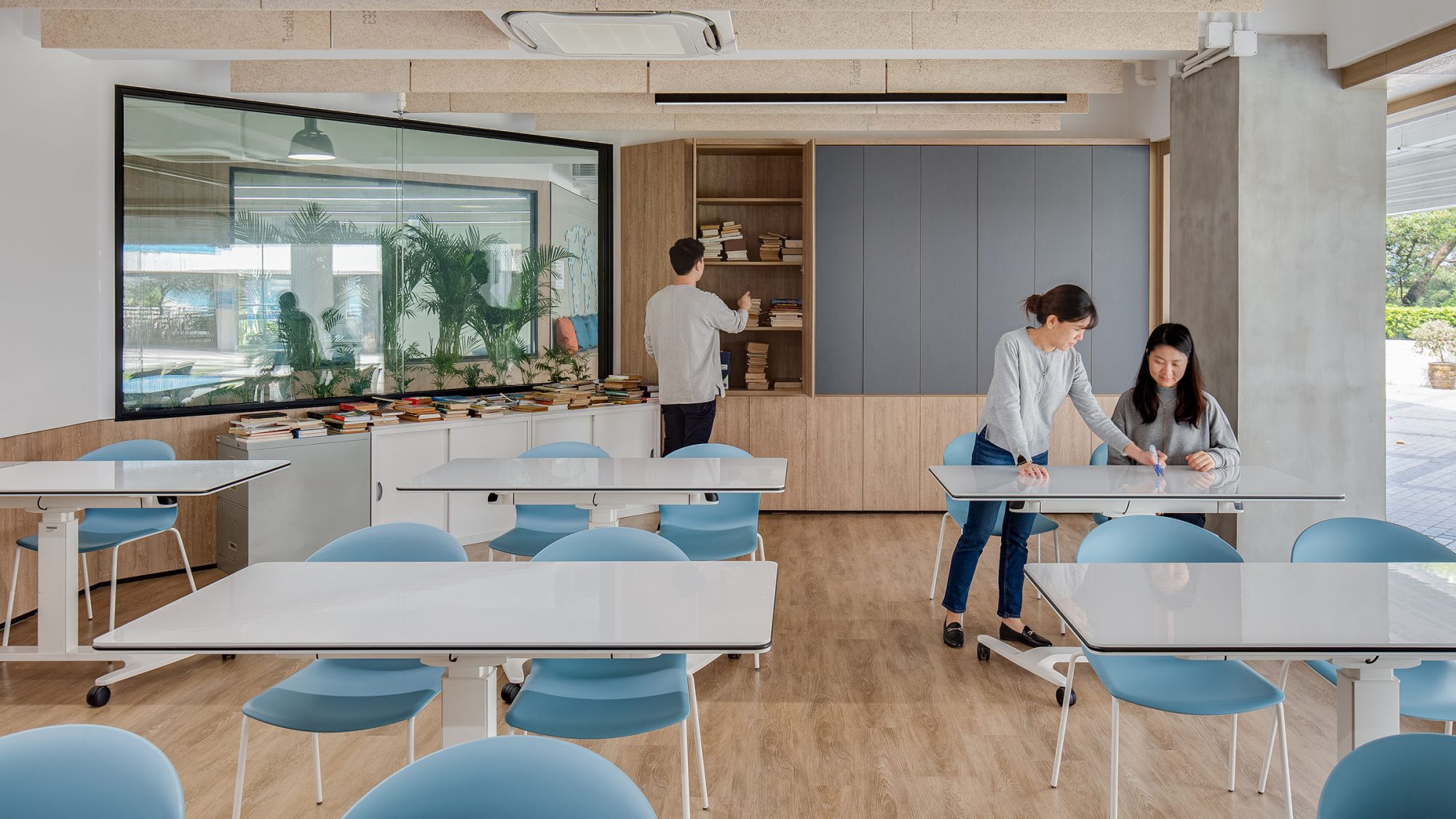 Li Po Chun United World College, Hong Kong
Li Po Chun United World College, Hong Kong Sustainable building design and construction refers to practices that use sustainable materials and methods that reduce the environmental impact of a building. It is an approach to building design that prioritises decarbonisation through conscientious material selection, energy and water efficiency and waste elimination. This includes activities during construction and across a project’s lifespan.
For further information, please read: Principles of sustainable building design
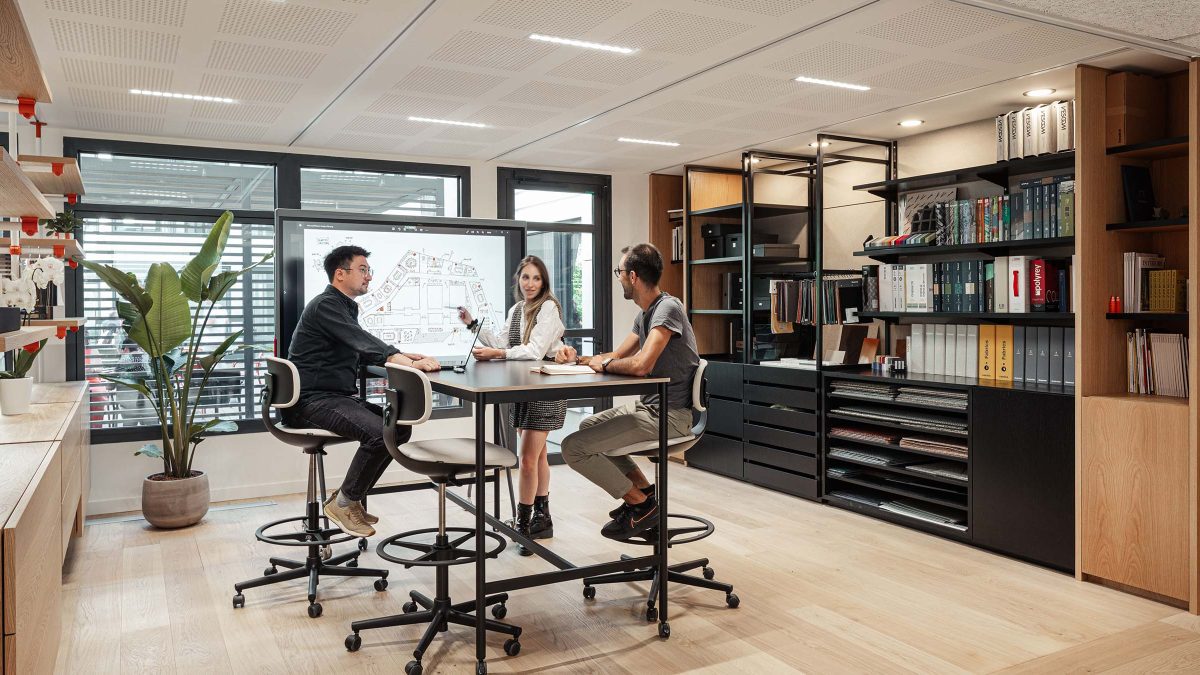 M Moser, Paris
M Moser, Paris There will always be a demand for new office spaces and facilities. However, as architects and designers, we have a responsibility to minimise our environmental impact wherever possible. For example, in our approach to Cat A fit-outs for sustainable office buildings.
Currently, the building industry is not sustainable, so it’s crucial to proactively seek better solutions. One way that all companies can be more sustainable is through their offices. With the rise of sustainable building design, many office projects focus on adaptive reuse, repurposing and futureproofing to reduce waste and raw materials extraction, saving carbon across the project lifecycle.
At the same time, designing for sustainability has become an essential element in architecture and construction. The increasing demand for sustainable office buildings has empowered the industry to create more sustainable projects. A great example is the growing Passivhaus movement, which raises important questions about whether the vast carbon cost of insulation and mass is worth the energy saved. We need to design systems to be more flexible, use more resources available for free and design for durability.
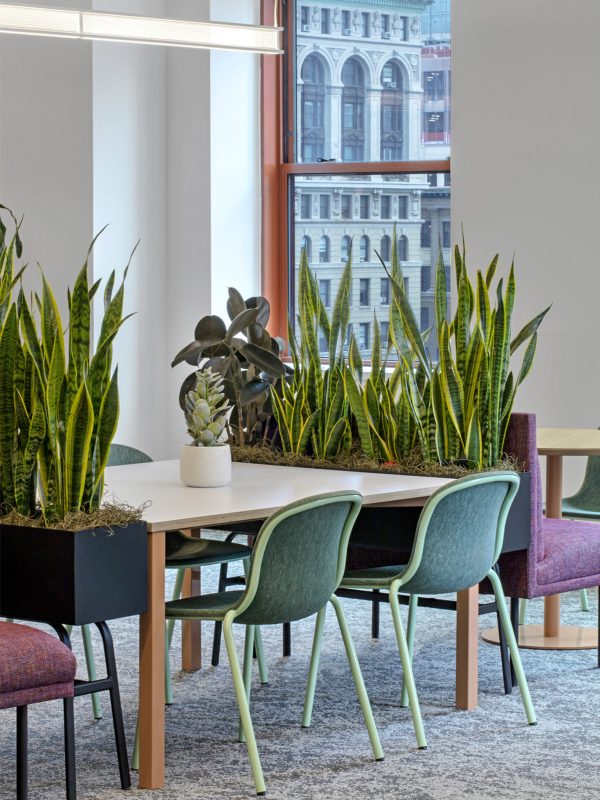 LinkedIn, New York
LinkedIn, New York Sustainable building design has several benefits, some of which we outline below. But first, let’s break down embodied and operational carbon.
Together, scopes 1, 2 and 3 represent lifecycle carbon.
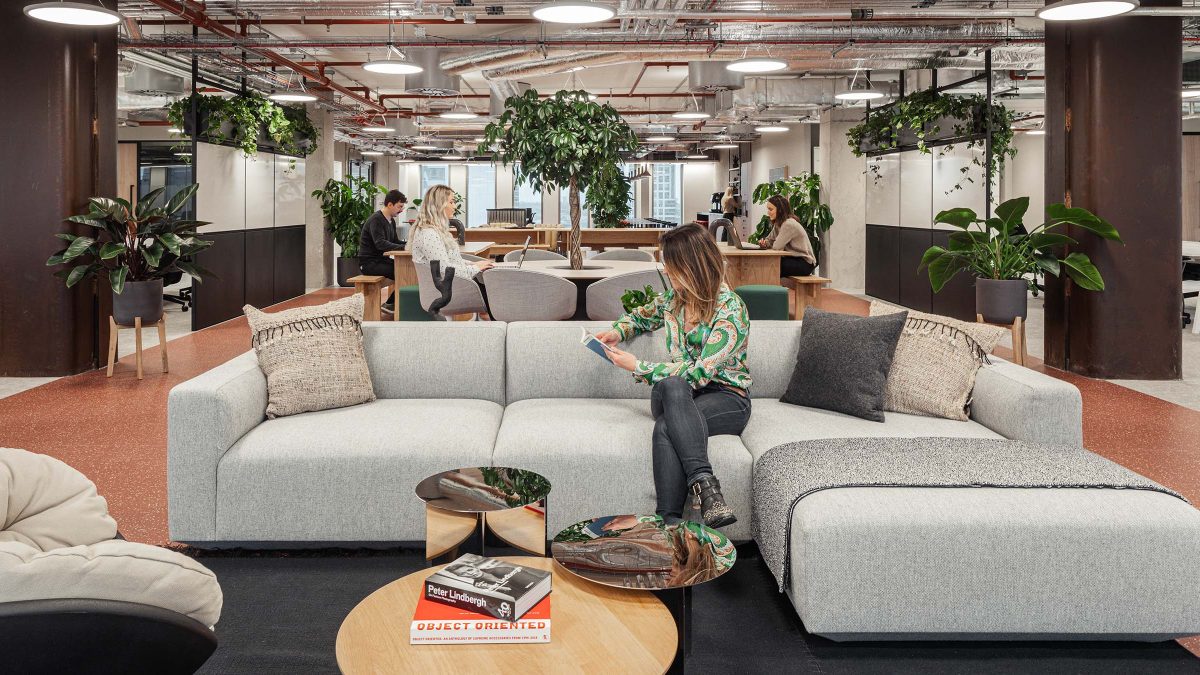 Knotel, London
Knotel, London 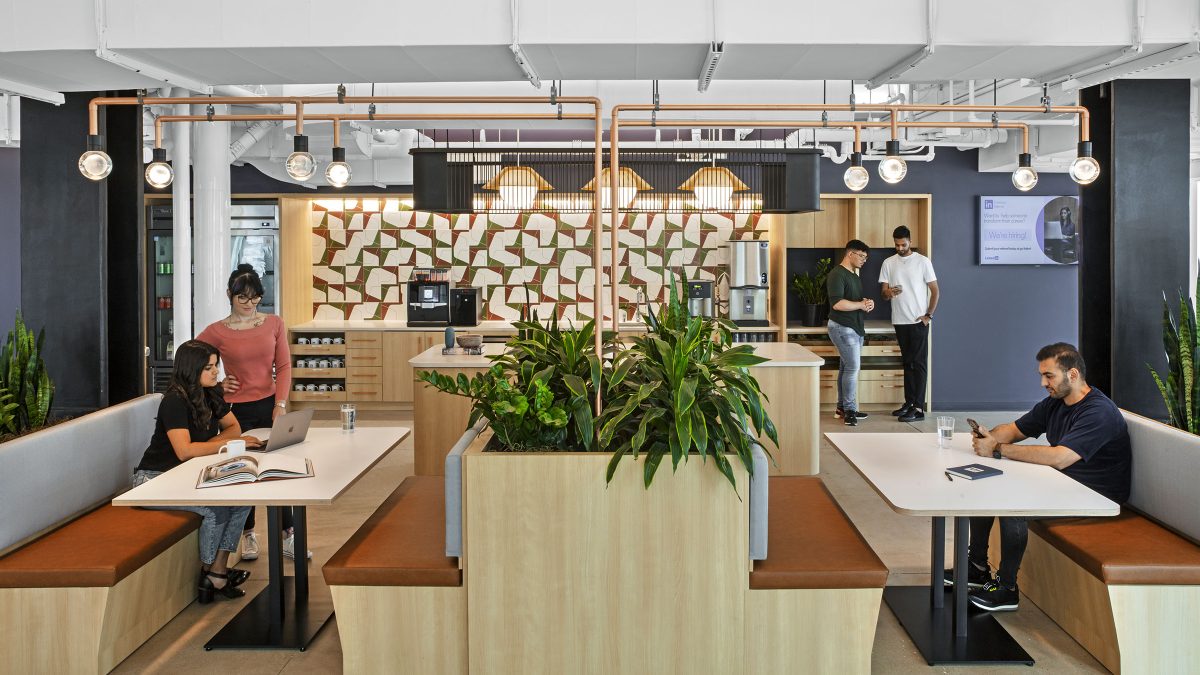 LinkedIn, New York
LinkedIn, New York 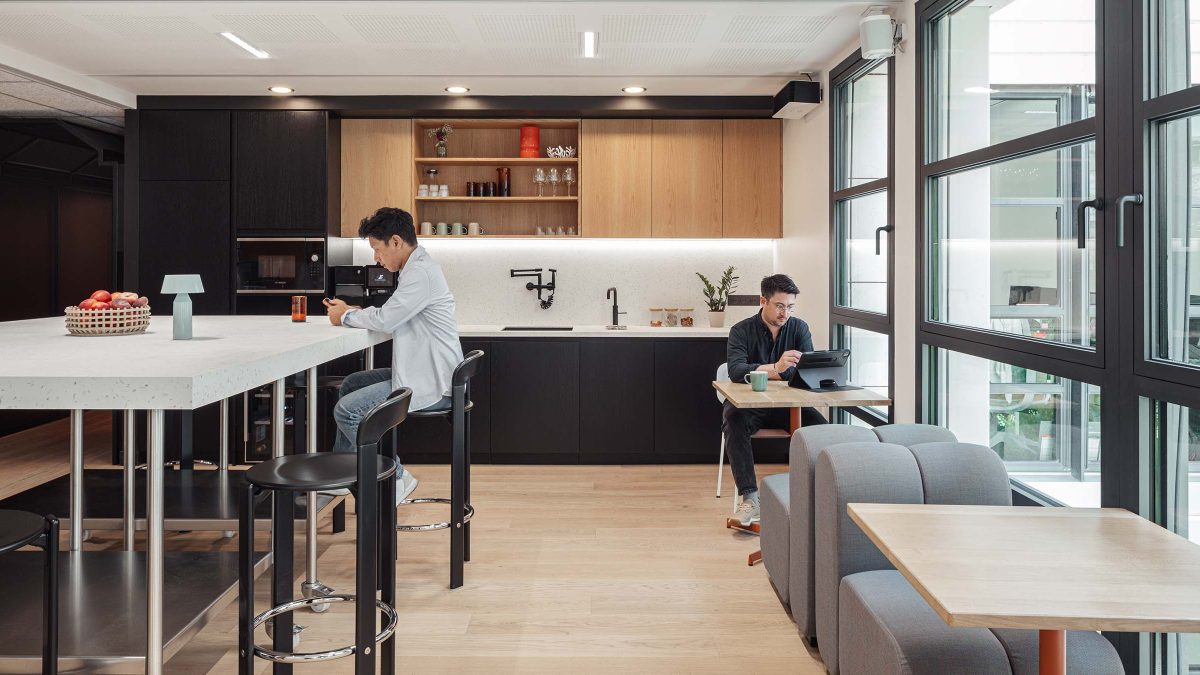 M Moser, Paris
M Moser, Paris Sustainable building design uses water-efficient systems such as low-flow faucets, rainwater harvesting and greywater recycling, which can significantly reduce water consumption.
Sustainable building design incorporates features that enhance employee comfort, such as natural lighting, green spaces and improved air quality. This helps to increase productivity and job satisfaction. According to a study from the IWBI, the certifying body of the WELL program, WELL Certification demonstrates a series of significant benefits, including:
– A near 30% improvement in overall satisfaction with the workplace, jumping from 42% to 70%.
– A 26% overall increase in reported wellbeing scores.
– A 10% increase in reported mental health and a 2% increase in reported physical health.
– A 10-point jump in median productivity scores.
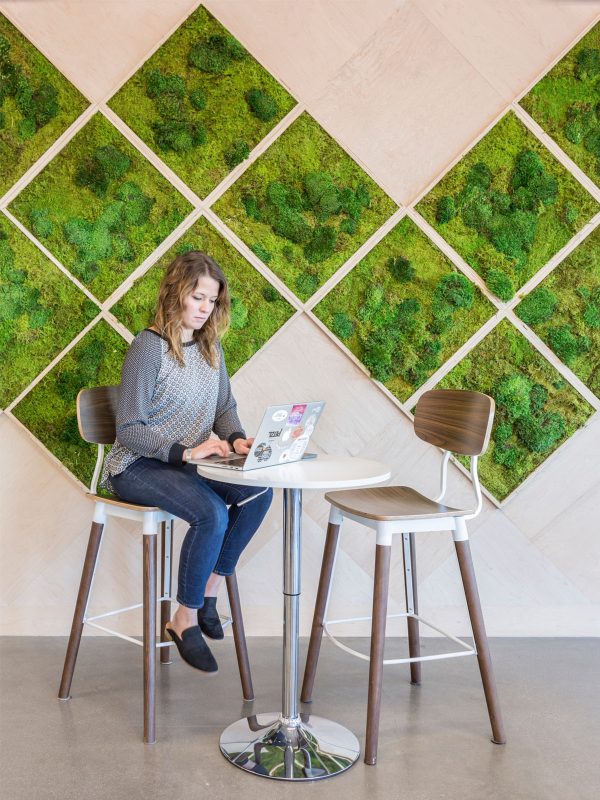 Medallia, San Mateo
Medallia, San Mateo Research from the U.S Green Building Council (USGBC) reveals that investing in green buildings enhances property values, typically by 4%, due to lower maintenance and energy costs, resulting in a rapid return on investment, often within seven years. Green buildings consistently yield cost savings, with LEED-certified structures reporting nearly 20% lower maintenance expenses compared to typical buildings.
Green retrofit initiatives also reduce operational costs by nearly 10% within a year. Between 2015 and 2018, LEED-certified U.S. buildings saved approximately $1.2 billion in energy, $149.5 million in water, $715.2 million in maintenance and $54.2 million in waste-related expenses.
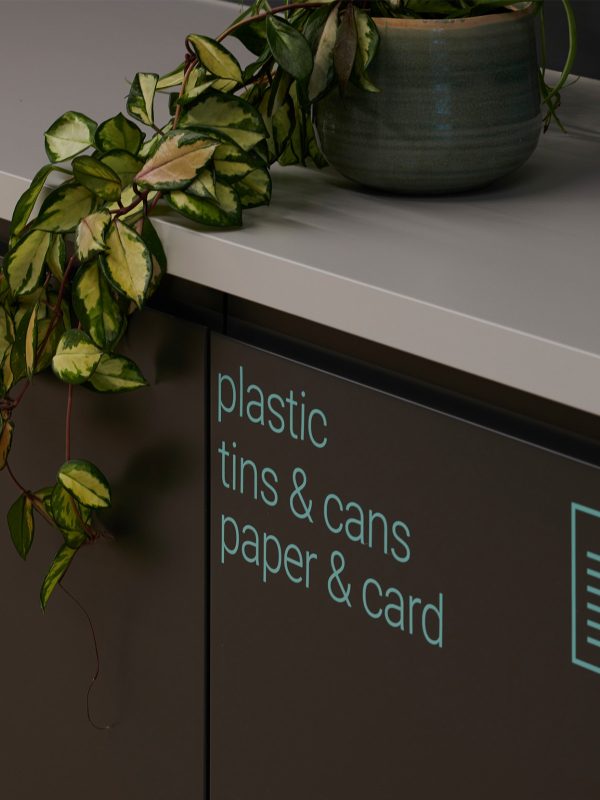 Unity, Brighton
Unity, Brighton At the same time, green building practices promote efficient resource use, reducing utility bills and environmental impact. Buildings account for 41% of U.S. energy consumption, surpassing industry and transportation. Buildings consume 14% of potable water, but green buildings aim to cut water use by 15% and save over 10% in operating costs. For perspective, retrofitting 1% of U.S. homes with water-efficient fixtures could reduce 80,000 tonnes of greenhouse gas emissions. This is equal to removing 15,000 cars for a year.
Overall, traditional building practices waste millions of tons of materials yearly, while LEED projects divert over 80 million tons from landfills, which is projected to reach 540 million tons by 2030.
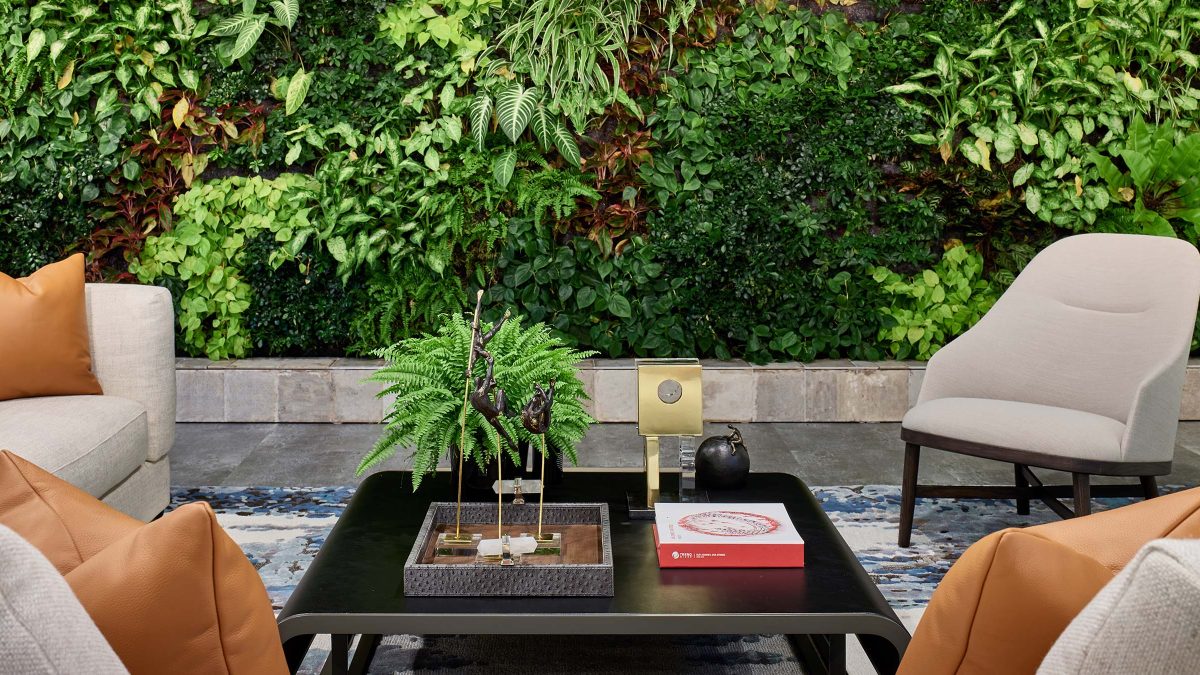 Trend Micro, Singapore
Trend Micro, Singapore Sustainable building design and construction are essential for a greener future as they prioritise decarbonisation, energy efficiency and resource conservation. Improved indoor air quality, reduced water use, and enhanced wellbeing are just a few of the many benefits for occupants.
Economically, sustainable buildings yield higher property values and lower costs while reducing environmental impact. If you’re looking to incorporate these practices into your next architecture and design project, please get in touch to learn more.
Associate Director. Sustainability
Global Director